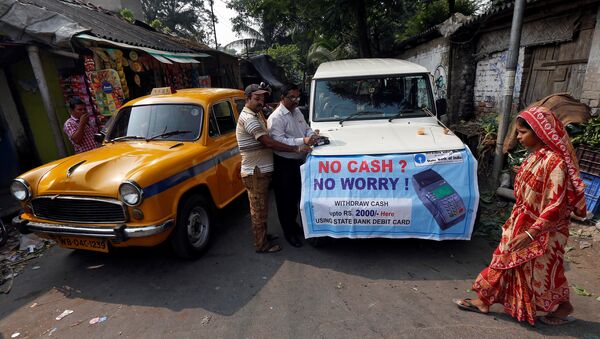New Delhi (Sputnik) — The bureaucrats of Karang, a small lake island in India's northeastern state of Manipur, have been awarded for toiling day and night to earn the distinction of becoming India's first "cashless island." In sync with Prime Minister Modi's vision of making India a digital economy, the officials provided training to the island's 1,859 residents, in order to make all transactions digital.
@PMOIndia awarded District administrator of #Bishnupur district, #Manipur for promoting #CashlessPayment. #KarangIsland of the district becomes country's 1st cashless Island.#DigitalIndia pic.twitter.com/iLYK7pPVDG
— North-East India (@NEIndia_ANI) April 23, 2018
With the help of self-help groups and youth clubs, the administration has successfully seeded 92 percent of bank accounts with mobile numbers and 70 percent of them were seeded with Aadhaar — the world's largest biometric identity database.
"The percentage of the electricity bills paid digitally increased from 78 percent to 97 percent in the last 20 months," the award citation read.
The Modi government is currently facing a wave of criticism and bad press after citizens started panicking when cash vending machines temporarily went dry in some of the states. This phenomenon was seen as an indication of the failure of the government's digitization drive, as it proved that people continued to rely on cash for day-to-day transactions. By raking up the cashless island issue by honoring its officials, the Modi government essentially aimed at disarming its critics. But in what can have a boomerang effect on the government, official statistics show that despite the success of digitization, the island ranks extremely low on other development benchmarks.
After cashless banks and ATMS, now cashless islands 😂!Pun intended. If pushing for entire cashless govts worth it? pic.twitter.com/chq9do7oEX
— சிவா (@CSArunagiri) April 23, 2018
According to a 2011 census providing the latest authentic socioeconomic data, Karang has a literacy rate of 53 percent, which is far below the national literacy rate of 74 percent. The island has 940 males and 919 females with a sex ratio of 977. According to the official data, most of the children leave school prior to secondary school and get married at an early age. The citizens are divided into 297 households; most of them are marginal workers and are totally dependent on fishing from Laktak Lake, as they do not have other means of livelihood. The island is characterized by very poor socioeconomic features, poor housing and sanitation facilities, scarce drinking water and backward transportation and communication.


